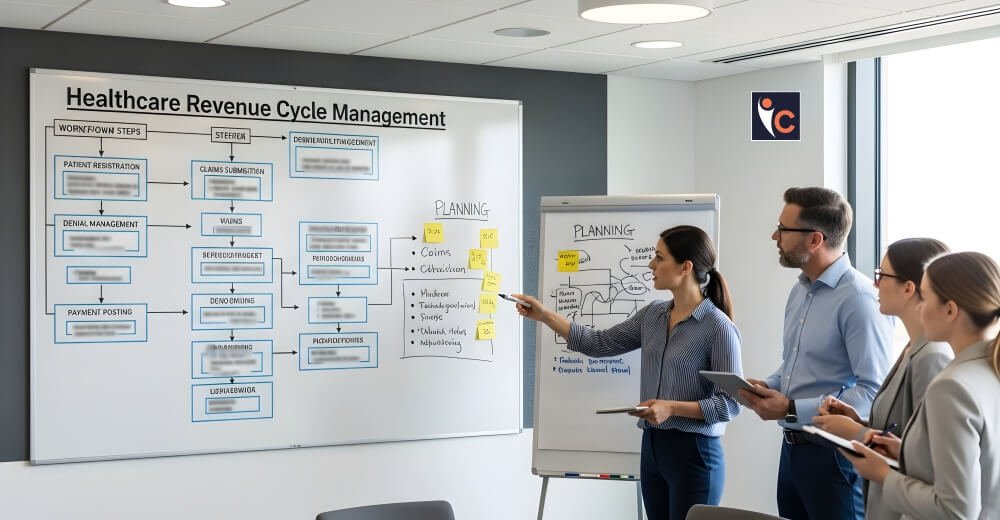Technology is revolutionizing healthcare, increasing the level of care and reducing cost at the same time. Since hospitals usually have to contend with increasing cost and scarcity of resources, they are employing advanced technology to mechanize their processes and enhance their performance. Such changes boost the efficiency of hospital work and help bring down costs, letting institutions give quality care at a lower cost.
This article explores the main healthcare technology inventions that cut costs in hospitals and the results they have on the healthcare sector.
Interoperability and Electronic Health Records (EHR)
Hospital operations have changed a lot thanks to EHR systems which put patient data on computers, reduce paperwork and make sharing information easy. Current EHR systems bring together patient details, lab findings and treatment records in one system, making them simpler to access and reducing both paperwork and extra testing. As a result, when clinicians can easily access real-time patient records, redundant diagnostic tests are greatly cut down, saving the healthcare system billions of dollars each year.
Being able to communicate with one another across different healthcare providers makes EHR systems more cost effective. When hospitals can deliver electronic records to clinics, laboratories and pharmacies, fewer errors occur, duplicated procedures are reduced and care coordination is improved.
Using Telemedicine and Remote Patient Monitoring
Treating chronic health problems and lowering the rate of hospital readmissions have both been made possible by telemedicine which is also cost-effective. Patients can be treated by hospitals without paying for office visits that involve both the building and workers. Many hospitals found that during the COVID-19 pandemic, up to 50% of the costs for non-urgent patient visits were saved by using telemedicine.
Remote Patient Monitoring (RPM) supplements telemedicine through the utilization of wearable technology and sensors that monitor patients’ vital signs, including heart rate, blood pressure, and blood glucose levels, in real-time. RPM enables hospitals to keep at-risk patients, including those with diabetes and heart failure, out of the hospital for extended periods.
Predictive Analytics and Artificial Intelligence
Detecting flaws and making resource allocation easier are some of the ways AI and predictive analytics are modernizing how hospitals decide things. AI helps health systems use data to predict patient results, determine the best number of staff members and make supply chain improvements. AI here can help hospitals predict patient admissions which helps them adjust staffing and prevent overstaffing, since 50-60% of a hospital’s budget is spent on such staffing.
Predictive analytics plays a key part in shielding businesses from expensive issues. Using patient information, AI can identify individuals who may get sepsis or hospital-acquired infections and assist in early actions that both save lives and cut treatment costs.
Robotic Process Automation
RPA assists hospitals by automating tasks that use up much time and effort. RPA handles billing, claims processing and appointment scheduling by using software bots.
Using RPA, these tasks can be completed with fewer mistakes and gives healthcare staff more time for patients. For example, RPA handles insurance claims five times faster than manual methods which helps reduce problems with paying out revenue. It was shown in a 2024 study that hospitals that use RPA can save up to 30% on administrative expenses, meaning millions of dollars in savings for larger institutions each year. It helps organizations ensure they meet regulations, so they avoid expensive fines.
Internet of Medical Things
The IoMT allows medical devices such as imagers and pumps to link with central networks, so their status can be checked and maintained in real-time. With IoMT, maintenance of equipment is foreseen in advance, so patient care is not interrupted by expensive downtime. An internet-linked MRI machine is able to alert technicians about upcoming issues, helping to prevent costly breakdowns.
Blockchain for Supply Chain and Data Security
Blockchain technology is increasingly being adopted in healthcare for the potential to make supply chain more transparent and data more secure. Through the creation of unalterable records of medical supply transactions, blockchain provides precise tracking of drugs and equipment, preventing losses from counterfeit goods or waste. A 2024 pilot program showed blockchain cut supply chain expenses by 15% at participating hospitals.
Conclusion
Advances in healthcare technology are revolutionizing hospital operations, leading to big cost reductions and maintaining or enhancing how patients are cared for. Telemedicine, EHRs, AI, RPA, IoMT and blockchain are all used to solve persistent problems in managing administration, patients and assets. As hospitals face greater financial issues, they now have to adopt these technologies to stay afloat. When hospitals use these innovations, they can spend less, improve patient outcomes and help create a sustainable healthcare system.
Read More Article – Click Here





